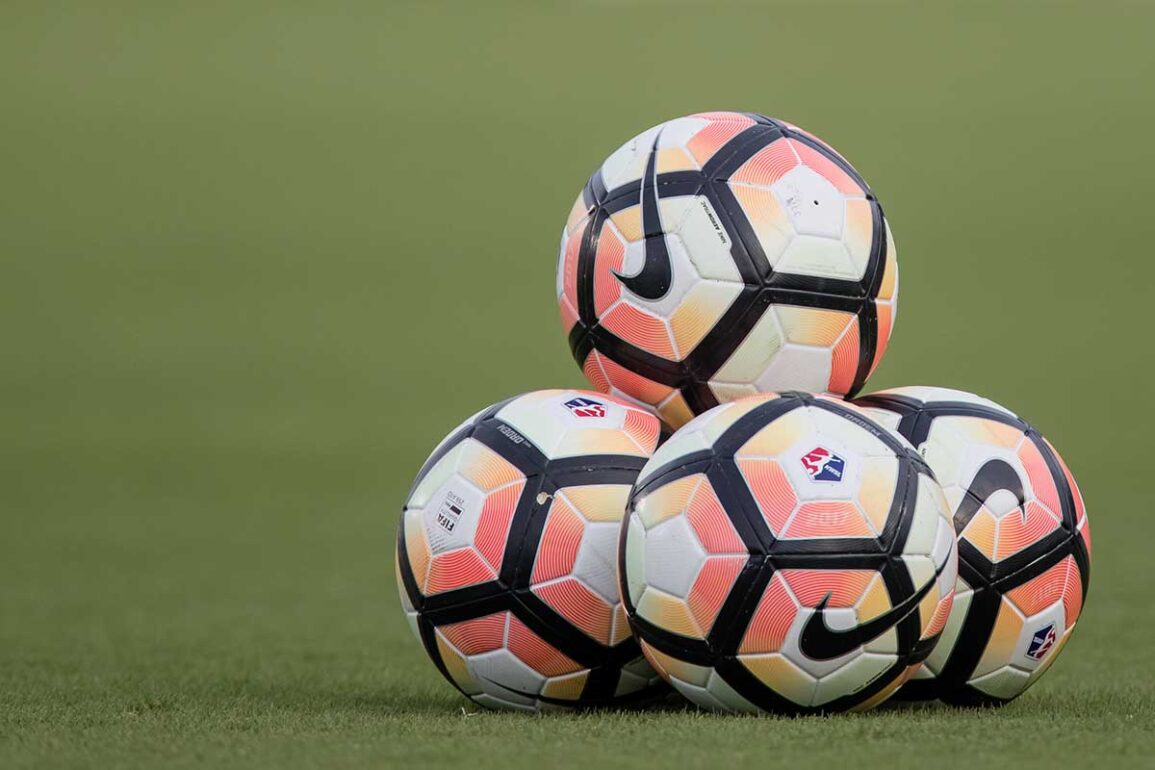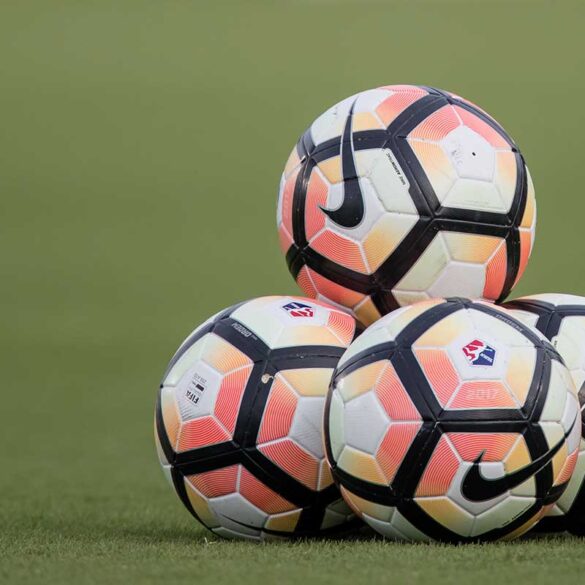National Women’s Soccer League Commissioner Lisa Baird must go.
Resign, quit, fire, by mutual agreement, forced out — however you want to frame it, Baird must go.
Reporting from The Athletic’s Meg Linehan unequivocally makes it so.
Yes, Baird must go, and with her, the NWSL as we know it today.
The NWSL’s foundation isn’t cracked. It was never there.
The NWSL released its anti-harassment policy in April 2021. The league has been in operation since 2013. League priorities, it seems, didn’t include the safety of its players and club staff.
Baird must go. Not because of what occurred in years prior, but because of the inaction taken by the league in 2021.
Baird’s successes in guiding the league through the uncertainties wrought by COVID-19 in 2020, the sponsorships brought in, and investment through expansion are now forever — and rightly so — diminished by 12 words:
“Thank you again for your email and I wish you the best.”
Baird must go. Because Sinead Farrelly and Mana Shim reached out to her in 2021 about a pattern of abuse they experienced as players in a league she now leads, and she did nothing.
Why did she do nothing? Is the subtle distinction here that Farrelly and Shim aren’t current NWSL players and an investigation had already been conducted?
Sure, they aren’t current players but isn’t the fact that Farrelly and Shim reached out six years after the initial investigation to reiterate their fears and relive their pain enough to prompt the NWSL Commissioner to take some form of action now?
“Thank you again for your email and I wish you the best.”
What if a supporter reaches out with the similar allegations?
“Thank you again for your email and I wish you the best.”
Harrington. Holly. Burke. LaHue. Benstiti. Riley.
“Thank you again for your email and I wish you the best.”
A pattern.
There is blame to go around, though, and to take aim solely at Baird is to miss the mark. As NWSL Commissioner, Baird serves at the behest of the league’s club owners. The same club owners who allow abusive and toxic environments to fester, the same club owners who have enabled abusive coaches to continue to find employment within the league, and the same club owners who issue carefully worded statements time and again.
This power vacuum lets owners run clubs as personal fiefdoms, with players subject to “rage trading” and as we now know, far worse.
So while Baird is the head of the NWSL, the owners are its body politic, and must not be spared from accountability.
It all must go.
Rebrand or Disband?
Can the NWSL recover? Should it? At a minimum, for the NWSL to continue, it must clean house. Break out the Roomba, Shark, those old heavy vacuums that suck the wax off of the floor, and spring for a couple of Dysons. Top to bottom, every front office across the league. Make it known the NWSL isn’t a safe harbor for abusers and enablers. Bring in new league leadership that is empowered to enact change with player protections baked into policies rather than layered on top.
There are legal nuances that I’m not considering here, but for the NWSL to not only survive but thrive, change must happen. That change could include
- embracing radical transparency. The NWSL has always feared transparency, for whatever reason, but there needs to be a mindset shift that views transparency as an integral part of league operations. Under the league’s anti-harassment policy, the number of complaints made and the number of investigations conducted is provided to the NWSL Players Association on a yearly basis with personally identifying information anonymized. Release that report publicly, and notify the NWSL Players Association each time a complaint is filed or an investigation is conducted rather than on an annual basis.
- hiring a third part to audit investigative reports and reporting procedures and report those finding out publicly.
- ensuring players have a seat at the table. A representative from the NWSL Players Association should have a spot on the leadership team and/or Board of Governors with voting authority.
- maintaining complaints and records from investigations for the lifespan of the league. Currently, the anti-harassment policy calls for preservation of these documents for up to five years. There are probably legitimate legal reasons for this five-year rule but my bank keeps my statements for at least seven years. So.
- changing its reporting mechanisms. This is fraught with privacy and legal landmines but Paul Riley should never have been allowed to coach anywhere after Portland’s initial investigation. Currently, anonymized reports are available on request to members of the NWSL but there has to be some way the league can proactively notify clubs in situations where player safety is at risk. Perhaps a zero-tolerance policy that includes all members of the NWSL (coaches, owners, players, staff, and so on) to sign away their right to privacy on investigations found to be credible as a condition of employment. I admit this is far-reaching.
- embracing free agency for players. Let chaos reign! In all seriousness, the lack of control over their own careers contributes to the innate power imbalance between players and clubs. Clubs will quickly feel the economic sting when players won’t play for them. Sadly, all too often the loss of revenue is the real impetus for change.
- requiring each team to have a trained human resources (HR) person. Hard to believe but it wasn’t too long ago that a club or two lacked a dedicated HR person let alone department.
- empowering the NWSL Commissioner’s office to initiate its own internal investigations without the need for a formal complaint. Whispers can waft up to the highest of ivory towers.
Better and many more solutions exist. Protecting players and treating people with respect isn’t rocket science.
The league is undergoing research for a rebrand to celebrate its 1o-year anniversary in 2022. Fancy fonts, killer graphics, and a fresh color palette can’t hide the stench from a rotten core.
Who are you? Who do you want to be? How are you going to get there?
Anyone who has participated in a rebrand will recognize those questions. For the NWSL, it needs to answer those questions honestly. Hint: The answers lie with the players. Supporters don’t wear jerseys with the names of team owners on their backs.
The turning point is here, NWSL, and it’s long overdue. Just a hunch but NWSL supporters probably align more with the progressive WNBA than, say, the NFL, and that might make owners and an NWSL leadership team lacking in diversity uncomfortable. But to survive and grow, the NWSL can’t overlook the opportunity to pivot toward diversity.
For there to be an NWSL of tomorrow, it must get comfortable with being uncomfortable.
There will be more stories. The iceberg of misconduct has been floating along all this time. Do you see it?
Look again.
From out-of-court settlements involving prominent college coaches to firsthand accounts about abuse in Women’s Professional Soccer to the stories farther back that we’ll never know about, they’ve always been there, these stories, gasping for breath just under a surface of desperation and obligation.
Do you see it now? It’s called a pattern.
It’s a pattern of breaking down players — people — to build up psychological and emotional dependence. A pattern of looking past red flags into an overflowing trophy case. A pattern of carefully worded legal statements followed by inaction. A pattern of unaccountability. A pattern of hiding behind legal nuance. Patterns, you have to see now, go on.
Now listen.
Sinead Farrelly. Mana Shim. Kaiya McCullough. Listen to them.
Do you hear them?
Because if you do, you know the NWSL of today cannot continue.
The NWSL of tomorrow, should there be one, must break the pattern.


